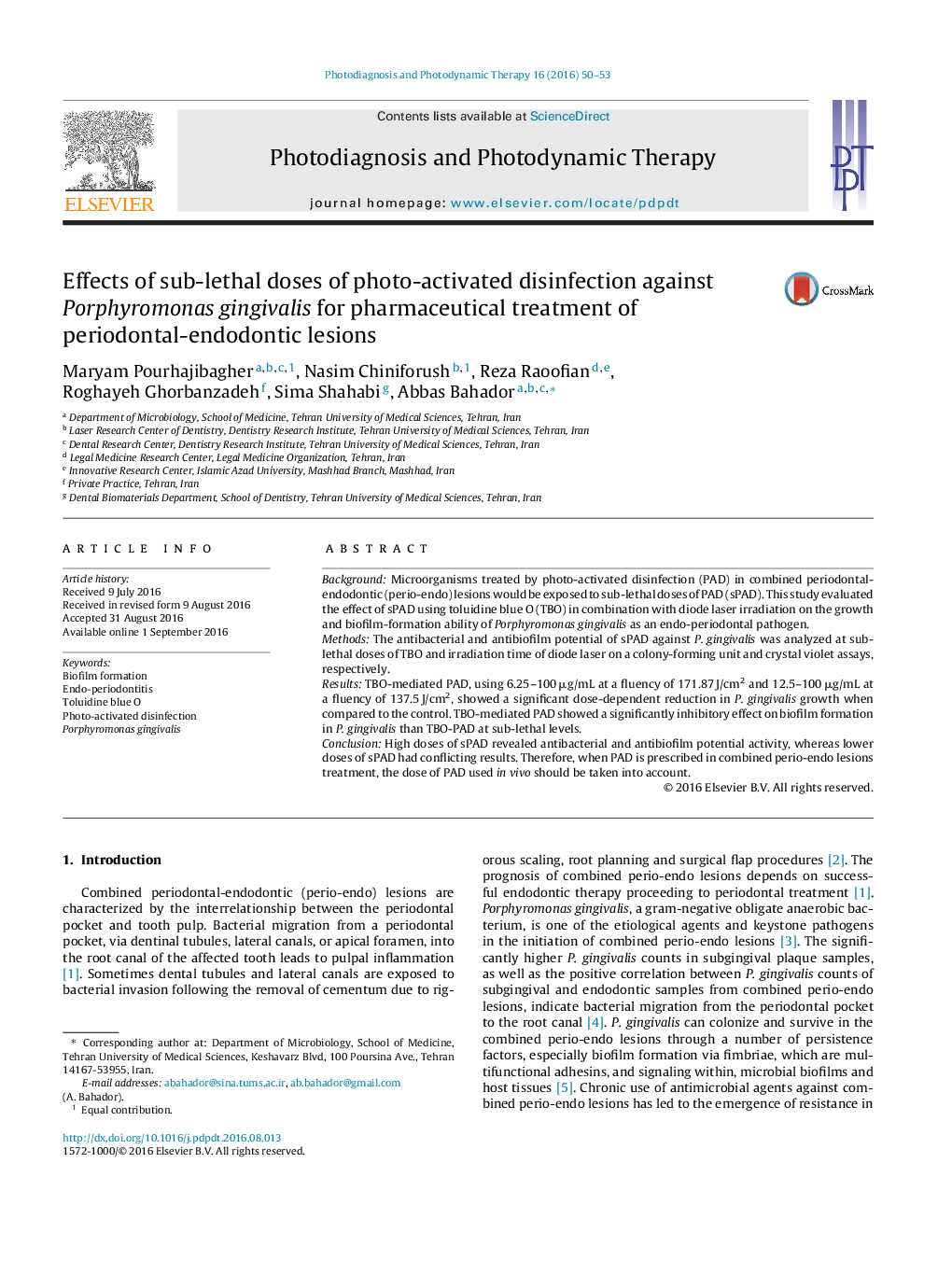| کد مقاله | کد نشریه | سال انتشار | مقاله انگلیسی | نسخه تمام متن |
|---|---|---|---|---|
| 3820318 | 1597726 | 2016 | 4 صفحه PDF | دانلود رایگان |
• High doses of sub-lethal PAD (sPAD) showed antibacterial efficacy against Porphyromonas gingivalis.
• High doses of sPAD induced antibiofilm potential activity against P. gingivalis..
• TBO-mediated PAD significantly inhibited biofilm formation ability of P. gingivalis compared with TBO-sPAD.
BackgroundMicroorganisms treated by photo-activated disinfection (PAD) in combined periodontal-endodontic (perio-endo) lesions would be exposed to sub-lethal doses of PAD (sPAD). This study evaluated the effect of sPAD using toluidine blue O (TBO) in combination with diode laser irradiation on the growth and biofilm-formation ability of Porphyromonas gingivalis as an endo-periodontal pathogen.MethodsThe antibacterial and antibiofilm potential of sPAD against P. gingivalis was analyzed at sub-lethal doses of TBO and irradiation time of diode laser on a colony-forming unit and crystal violet assays, respectively.ResultsTBO-mediated PAD, using 6.25–100 μg/mL at a fluency of 171.87 J/cm2 and 12.5–100 μg/mL at a fluency of 137.5 J/cm2, showed a significant dose-dependent reduction in P. gingivalis growth when compared to the control. TBO-mediated PAD showed a significantly inhibitory effect on biofilm formation in P. gingivalis than TBO-PAD at sub-lethal levels.ConclusionHigh doses of sPAD revealed antibacterial and antibiofilm potential activity, whereas lower doses of sPAD had conflicting results. Therefore, when PAD is prescribed in combined perio-endo lesions treatment, the dose of PAD used in vivo should be taken into account.
Journal: Photodiagnosis and Photodynamic Therapy - Volume 16, December 2016, Pages 50–53
